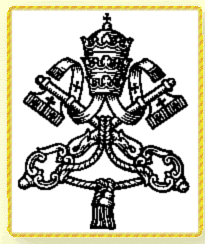From the Boston Globe:
On Sunday, Christmas Eve, Boston Catholic Television plans to launch a souped up website that will feature, among other attractions, downloadable Christmas video messages in English, Spanish, and Portuguese from Cardinal Sean P. O'Malley, the Roman Catholic archbishop of Boston.
Starting early next year, O'Malley also plans to regularly record video messages for downloading from the Internet.
The Catholic Church, which lags behind some other denominations in its embrace of Internet technologies, is rapidly expanding its use of new technology in its search for souls. Cardinal Edward M. Egan of New York recently started a satellite radio show, and the late Pope John Paul II, starting in 2003, offered daily text messages to cellphone users.
O'Malley, a Capuchin Franciscan friar who has taken a vow of poverty and is a frequent critic of American consumer culture, is rapidly emerging as an unlikely pioneer in the use of new media by a 2,000-year-old church.
He is the only Catholic cardinal known to have his own blog, and the archdiocese is overhauling its newspaper website and its television website as part of an effort to broaden its reach and circumvent traditional media. The archdiocese has also assigned e-mail addresses to all priests, a handful of whom have balked at using computers, and has created an intranet site that chancery officials expect will soon replace the monthly mailings used to communicate with clergy.
"The cardinal wants us to utilize the tremendous tools that we have at our disposal and to expand the reach of those tools, so that we can bring the message of the church and the good works of the church to the Catholic community," said O'Malley's communication director, Terrence C. Donilon. "He clearly understands the power of the new media that is available, and he sees an opportunity for us to reach a much wider audience with these tools."
New forms of communication, such as blogging and podcasting, have been widely embraced by clergy of many denominations, particularly those in smaller evangelical churches that emphasize outreach to the young and unchurched.
Many mainline Protestant churches are following suit: At Trinity Church in Copley Square, for example, audio recordings of the sermons of the new rector, the Rev. Anne B. Bonnyman, and other clergy are available on the Episcopal parish's website.
The Catholic Church has generally resisted technologies such as video screens inside churches, though they are common in many Protestant churches. Video broadcasting is widely used at large papal events.
A specialist on Catholic liturgy, the Rev. John F. Baldovin, said there has been some resistance to technology in churches "because it distances you from the personal experience of the liturgy."
Baldovin pointed out that a Catholic priest -- Fulton J. Sheen, later named a bishop -- was a pioneer in religious broadcasting, first with a radio show called "The Catholic Hour" and then with a television program, "Life is Worth Living," but that the church has been slower to adapt to new technologies in more recent years.
"You could see the possibilities of it all with Bishop Sheen in the '50s, and I don't understand why we dropped the ball," said Baldovin, a professor of historical and liturgical theology at Weston Jesuit School of Theology in Cambridge.
Although the website of the archdiocese is still less sophisticated than those of other Catholic dioceses, the archdiocese has been redoing its media websites with an eye toward evangelization.
He has already posted video of his homily from the Episcopal Ordination online and episodes of his television program "Conversations with Cardinal Sean" are also available online.










No comments:
Post a Comment